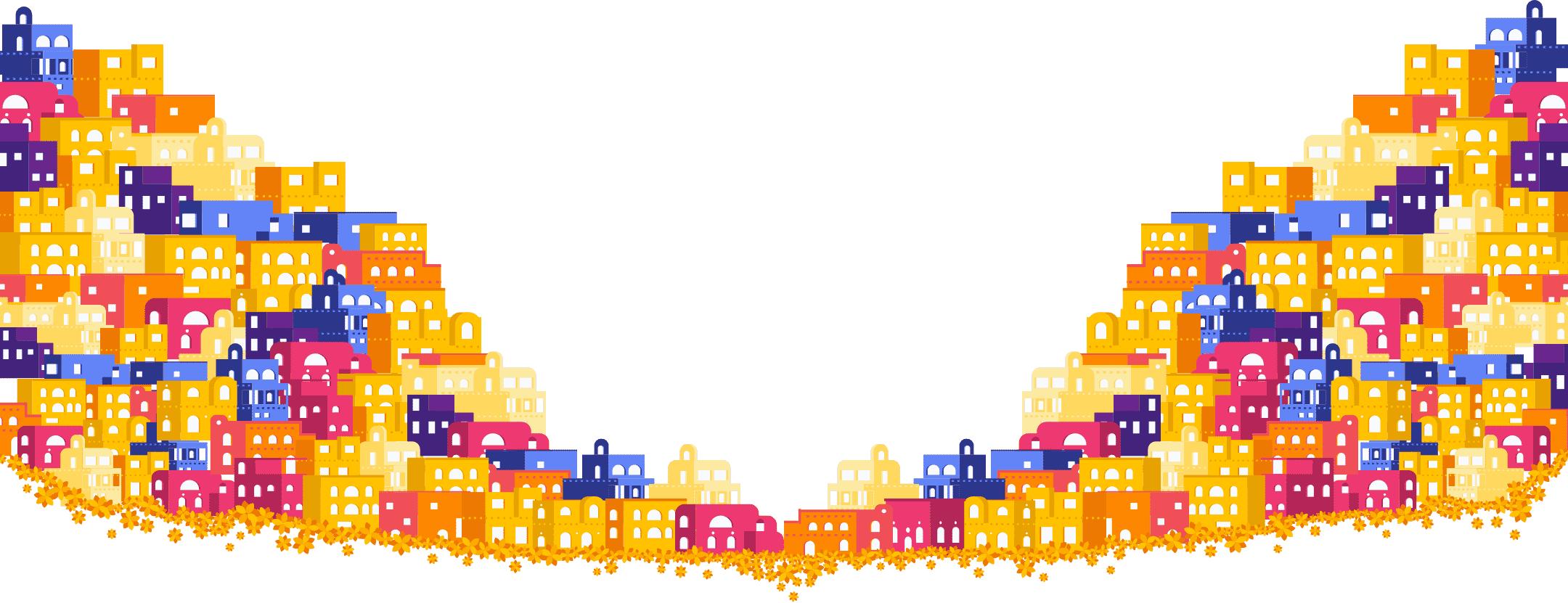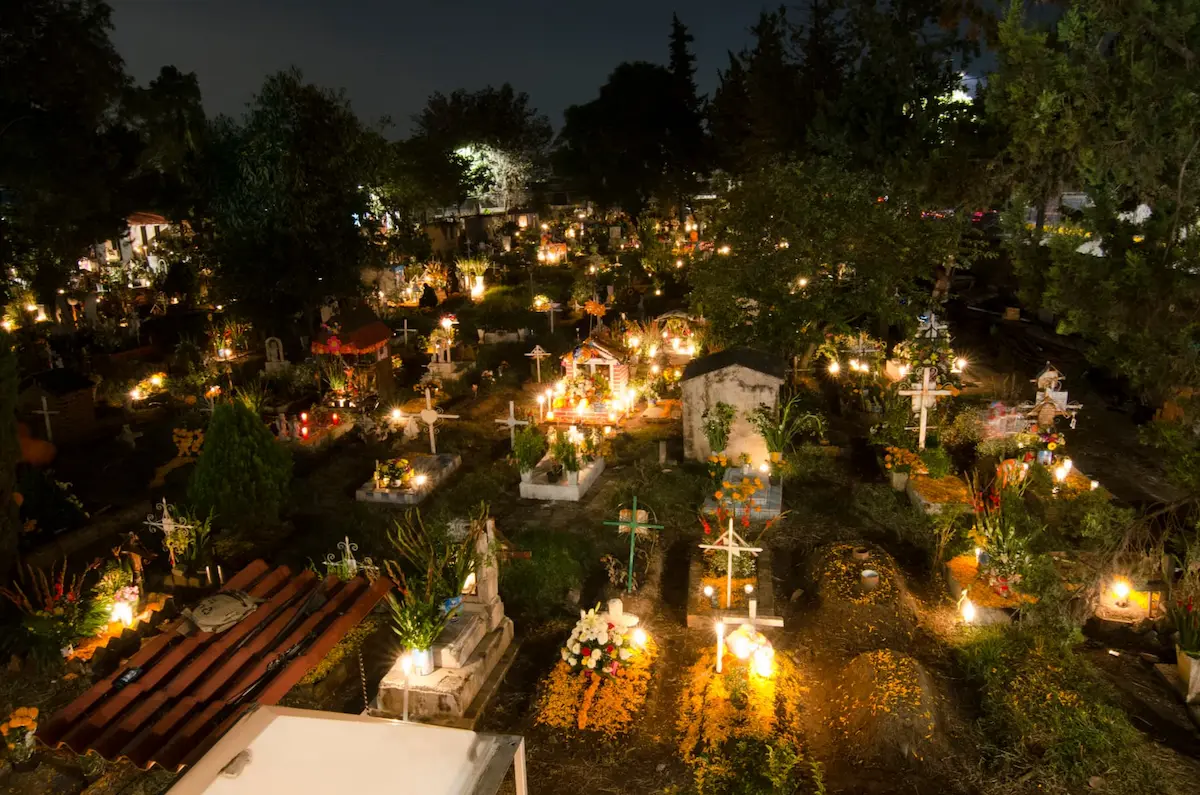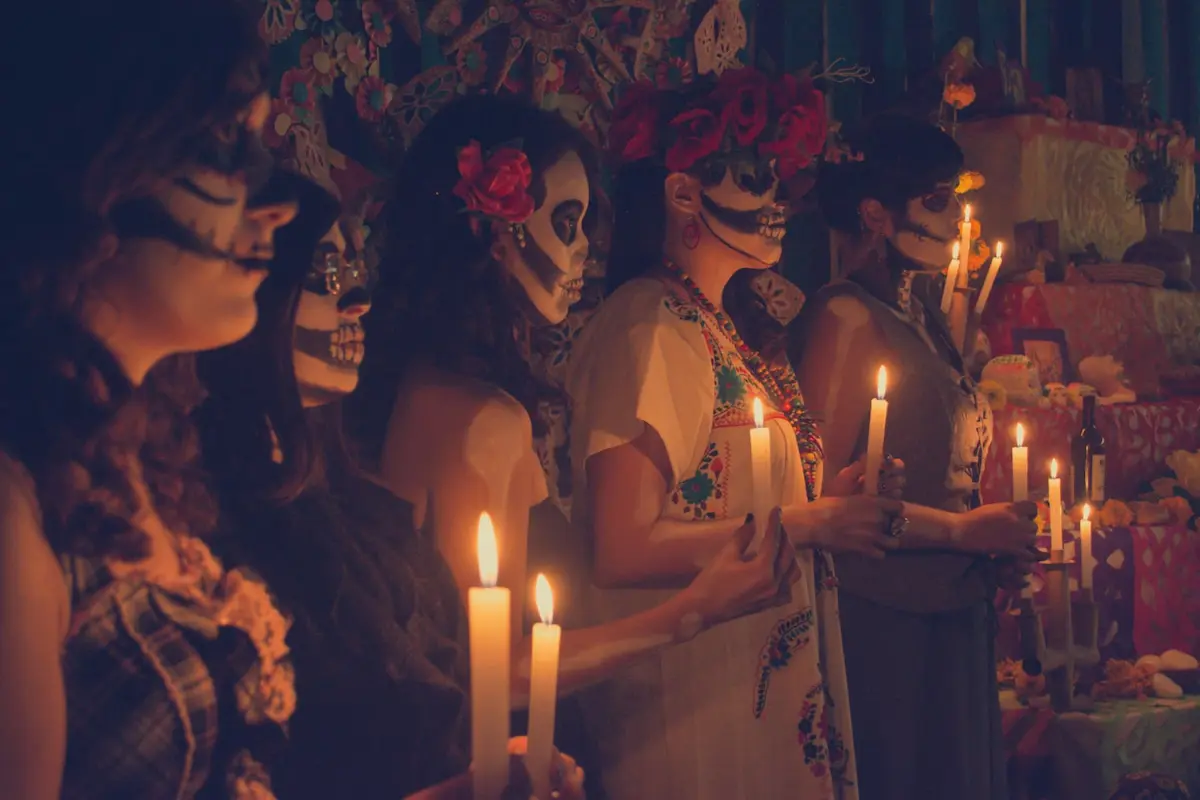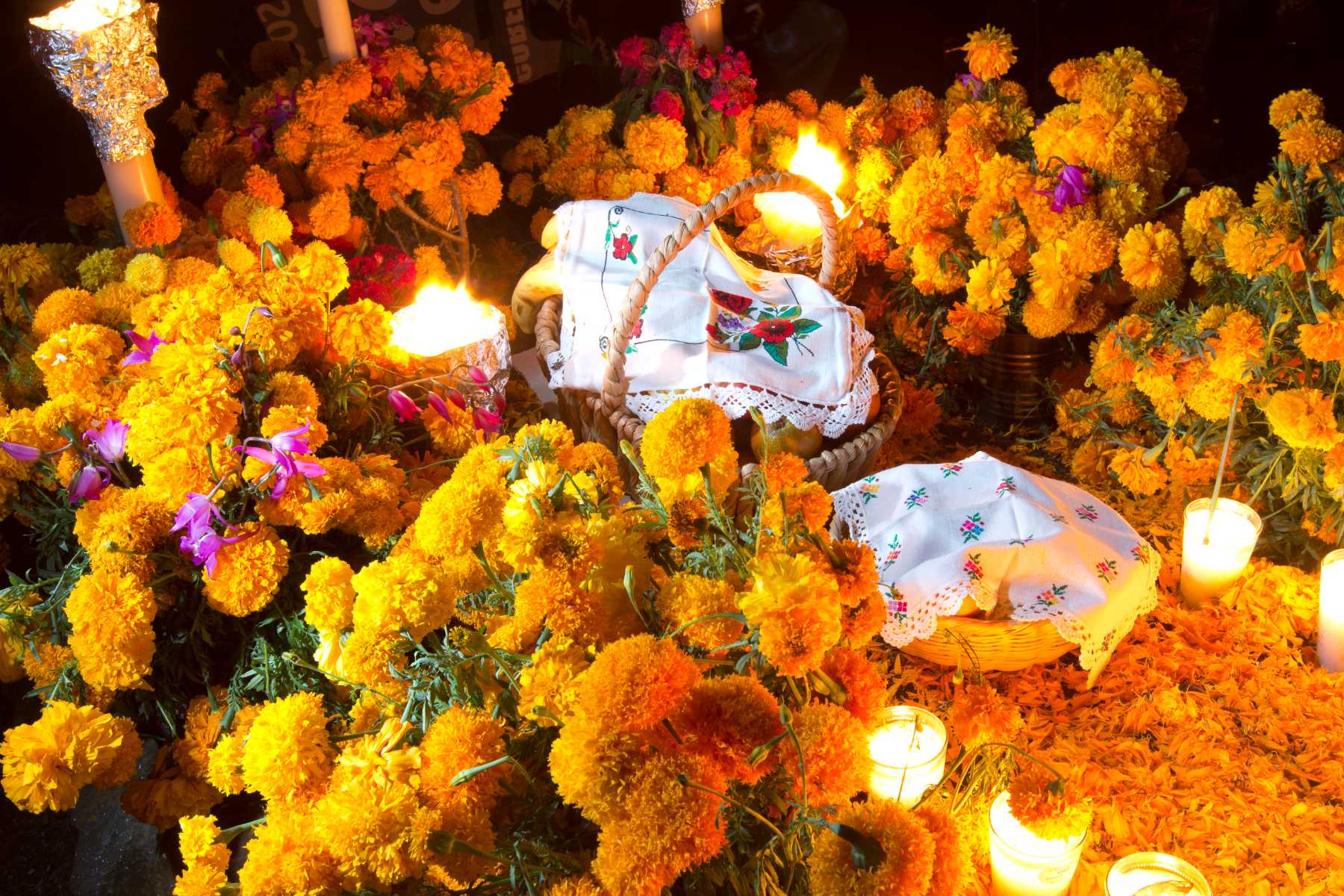Day
 Of The
Of The Dead
Dead
Dia de los muertos



 Of The
Of The Dead
Dead




Day of the Dead (Dia De Los Muertos) is a two day holiday that reunites the living and dead. Families create ofrendas (Offerings) to honor their departed family members that have passed. These altars are decorated with bright yellow marigold flowers, photos of the departed, and the favorite foods and drinks of the one being honored. The offerings are believed to encourage visits from the land of the dead as the departed souls hear their prayers, smell their foods and join in the celebrations!
Day of the Dead is a rare holiday for celebrating death and life. It is unlike any holiday where mourning is exchanged for celebration.
“Day of the Dead is a holiday to remember loved ones by sharing a meal with them as one would when they were alive.”

Dia de los Angelitos (Day of the little angels) starts the holiday at midnight on Nov 1st, where the spirits of all deceased children are believed to be reunited with their families for 24 hours. Families construct an altar, known as an ofrenda, with the departed child’s favorite snacks, candies, toys, and photographs to encourage a visit from their departed children. The names of the departed children will often be written on a sugar skull.
At midnight of the following day (November 2nd), the celebrations shift to honor the lives of the departed adults. The night is filled with laughter and fun memories, much like the night before. However, the Ofrendas take on a more adult-like theme with tequila, pan de muerto, mezcal, pulque and jars of Atole. Families will also play games together, reminisce about their loved ones, and dance while the village band plays in their town.
The next day is the grand finale and public celebration of Dia de Muertos. In more recent times, people come together in their cities, dressed up with Calavera painted faces (Skeletons) and have parades in the streets. Cemetery visits are also common on the last day as families will go to decorate the grave sites with Marigold flowers, gifts, and sugar skulls with the departed’s name on them. It’s customary to clean the grave stone and restore the color.

Sugar Skull art, coloring pages, and more!
Calaveras are ubiquitous during Day of the Dead. The skulls are often drawn with a smile as to laugh at death itself. They take many forms such as sugar candies, clay decorations, and most memorable: face painting. Sugar skulls are decorated and placed on ofrendas of loved ones. A Calavera, or sugar skull, is a decorative skulls made (usually by hand) from either sugar (called Alfeñiques) or clay which are used in the Mexican celebration of the Day of the Dead.
Marigolds are believed to be the pathways that guide the spirits to their ofrendas. The flower’s vibrant colors and scent attract the departed souls, as they return to feast on their favorite foods. They are called “Flor de Muerto” (Spanish for Flower of Dead) and they symbolize the beauty and fragility of life. Marigold flowers include around 60 annuals and perennials that are native to Mexico and Central America.

The symbolism behind the flowers

Learn how to make an Ofrenda
While the most recognizable aspects of Day of the Dead are the representations of skulls and skeletons, the tradition that holds the most meaning is the Ofrenda (Spanish for offering). The Ofrenda is what the whole celebration is about; it’s a collection of offerings dedicated to the person being honored.
A brightly colored Oilcloth covers the table and on top of that sits a collection of photographs and personal items of the departed person. The lower portion of the altar is where the offerings are placed, from traditional Mexican cuisine to other items that represent the honored person’s particular tastes.